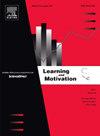The impact of pretraining on autoshaping and operant acquisition in rats is significant but transient
IF 1.8
4区 心理学
Q3 PSYCHOLOGY, BIOLOGICAL
引用次数: 0
Abstract
Pretraining refers to events or conditions explicitly arranged prior to the learner (e.g., student, employee) experiencing specific instruction within the learning environment (i.e., training). Such pretraining can occur inside or outside of the specific learning environment, but by definition must precede the onset of training. Pretraining can modify the rate and quality of early learning and the final performance levels attained. Within experimental psychology, laboratories often include pretraining to hasten acquisition, but few empirical studies support this practice. Therefore, in the present study, four distinct levels of pretraining were examined by randomly assigning 284 naïve rats into groups: no training, chamber acclimation, pellets only, or magazine training. By manipulating experience with the chamber, food pellets, and stimuli associated with pellet delivery, direct assessments were made of pretraining on autoshaped lever press acquisition and incremental progress through a fixed order of common (ratio and interval) schedules of reinforcement. Pretraining affected acquisition, and the several measures of learning corroborated the presumed benefits of magazine training. Notably, simple pre-exposure to the chamber (both with pellets and without pellets in the magazine) also promoted acquisition compared to the no-training group. Nevertheless, despite clear benefits upon acquisition in early sessions, comparable levels of performance developed as training progressed, with the exception of higher lever-pressing rates from the magazine-training group compared to the pellets-only and chamber-acclimation groups. Magazine training hastened operant acquisition, but the overall benefit was somewhat diminutive and short-lived, and the practical value of these pretraining procedures on subsequent operant performance appears limited.
预训练对大鼠自成型和操作习得的影响是显著的,但是短暂的
预训练是指在学习者(如学生、员工)在学习环境(即培训)中经历特定指导之前明确安排的事件或条件。这种预训练可以在特定的学习环境内部或外部进行,但根据定义必须在训练开始之前进行。预训练可以改变早期学习的速度和质量以及最终达到的表现水平。在实验心理学中,实验室经常包括预训练来加速习得,但很少有实证研究支持这种做法。因此,在本研究中,通过将284只naïve大鼠随机分为四组:不训练,室内驯化,仅颗粒或杂志训练,研究了四种不同水平的预训练。通过操纵实验室、食物颗粒和与颗粒递送相关的刺激的经验,通过固定顺序的共同(比率和间隔)强化时间表,直接评估了自动成形杠杆按压获取的预训练和增量进展。预训练影响习得,学习的几个测量证实了杂志训练的假定好处。值得注意的是,与没有训练的组相比,简单的预先暴露在枪膛里(弹匣里有和没有弹匣里有)也促进了习得。然而,尽管在早期的训练中获得了明显的好处,但随着训练的进行,他们的表现水平也有所提高,除了弹夹训练组的杠杆按压率高于纯弹丸训练组和室内驯化组。杂志训练加速了操作习得,但总体上的好处是微不足道和短暂的,这些预训练程序对后续操作表现的实用价值似乎有限。
本文章由计算机程序翻译,如有差异,请以英文原文为准。
求助全文
约1分钟内获得全文
求助全文
来源期刊

Learning and Motivation
Multiple-
CiteScore
2.90
自引率
0.00%
发文量
53
期刊介绍:
Learning and Motivation features original experimental research devoted to the analysis of basic phenomena and mechanisms of learning, memory, and motivation. These studies, involving either animal or human subjects, examine behavioral, biological, and evolutionary influences on the learning and motivation processes, and often report on an integrated series of experiments that advance knowledge in this field. Theoretical papers and shorter reports are also considered.
 求助内容:
求助内容: 应助结果提醒方式:
应助结果提醒方式:


